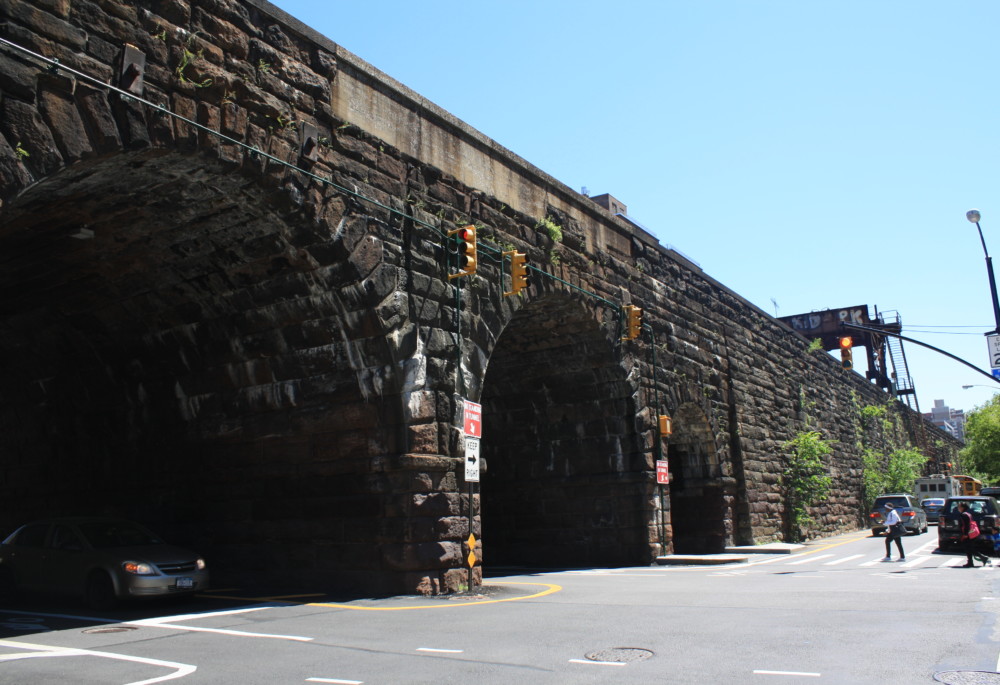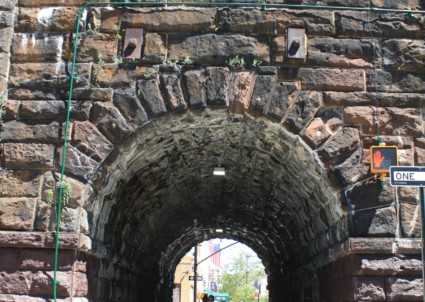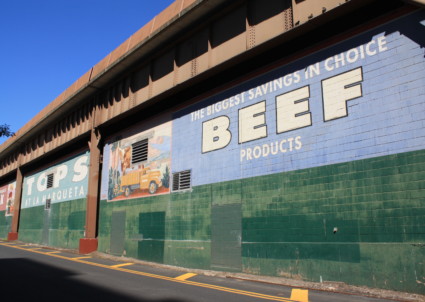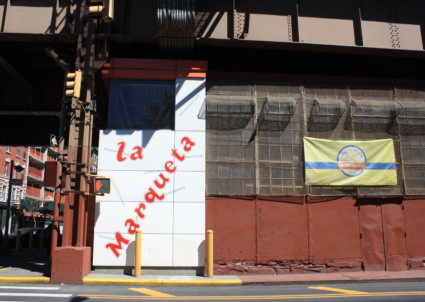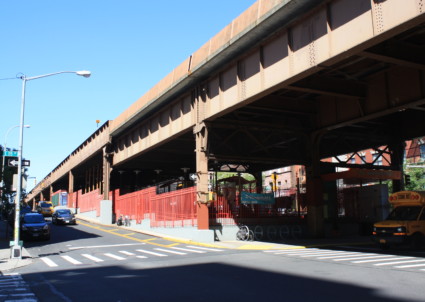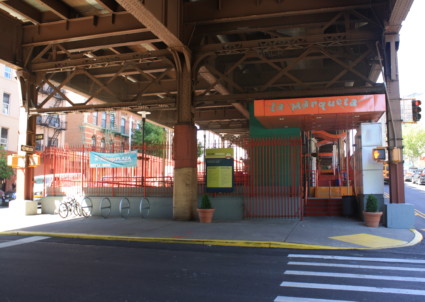Park Avenue Viaduct / La Marqueta
98th to 111th Streets
1874
111th to 116th Streets, main entrance: 1590 Park Avenue (1936)
In 1837, the New York and Harlem Railroad extended its Fourth Avenue (now Park Avenue) tracks to Harlem. In 1872, the tracks south of 98th Street were sunk below ground to reduce their street-level impact, and in 1874, a rustic, brownstone viaduct was built where the tracks emerged above ground. From 102nd to 110th Streets, cars and pedestrians may cross under the viaduct via rounded archways. A steel viaduct and bridge crossing the Harlem River were later built to continue the line northward. The construction of the viaduct had a lasting impact on the neighborhood. While the grand rowhouses west of Mount Morris Park (now Marcus Garvey Park) thrived, those to the east were replaced with subsidized housing. Beneath the tracks from 111th to 116th Streets is La Marqueta, a marketplace that originally served as an informal gathering place for pushcart vendors until the city officially sanctioned it in 1936. Around that time, Mayor Fiorello LaGuardia waged war against the city’s pushcarts, which were widely believed to be a traffic menace and sanitation hazard. La Marqueta became one of several enclosed markets operated by the city, with merchants renting stalls. It reached its apex in the 1950s and 1960s with over 500 vendors, and was an important cultural hub for the neighborhood’s Hispanic population. After decades of decline, the City Council allocated $3 million to revitalize the market in 2014.
